(单词翻译:单击)
5.Rhinorex's Giant Nose
5.鼻王龙的大鼻子
Rhinorex means something like "King of the Noses" and Rhinorex condrupus doesn't disappoint. In an unlikely twist, paleontologists found its mostly complete skull in storage at Brigham Young University, where it had been largely forgotten since the '90s. After slowly digging it out of a block of limestone over the course of two years—a task which they liken to chiseling a cranium out of a driveway—the paleontologists were delighted to discover they had a whole new species on their hands.
Rhinorex的意思是"鼻子之王",而崖埋鼻王龙这种生物一定不会让你失望。令人难以置信的是,考古生物学家在杨百翰大学的储藏室发现了这种生物最完整的头骨,它居然被人们遗忘在上世纪90年代。古生物学家们花了两年时间慢慢地从一块石灰岩中挖掘出这块头骨——就像是在马路上凿出一个头盖骨——此后,他们欣喜地发现,他们手上拿着的是一个全新的物种。
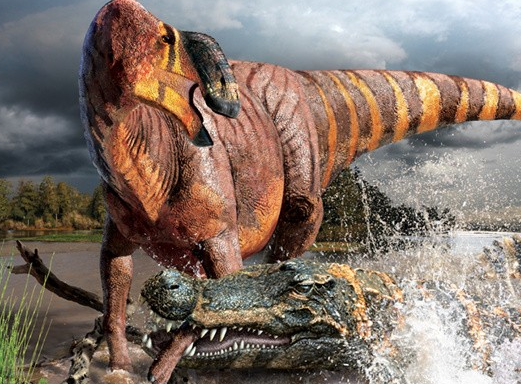
Rhinorex condrupus is part of the hadrosaur family, consisting of dinos with prominent bony crests atop their heads. However, the rhinorex eschewed the distinctive crest, swapping it for a truly legendary schnoz. The odd dinosaur and its crested brethren roamed the primeval wilds of Utah around 75 million years ago, during the Cretaceous period, where the Brigham Young specimen was possibly killed by a huge ancient crocodile.No one's sure why the rhinorex's proboscis is so pronounced, but it probably has nothing to do with a sense of smell. Instead of an olfactory advantage, the nose might have been used to attract mates, because you know what they say about guys with big noses.
崖埋鼻王龙是鸭嘴龙家族的一份子,这个家族的成员头上都有突出的峰骨。但是,鼻王龙却没有这种独特的峰骨,取而代之的是一个极为神奇的大鼻子。约7500万年前,也就是白垩纪时期,这种奇怪的恐龙和它有峰骨的同伴们漫步在原始的犹他州荒野上。这只在杨百翰发现的恐龙很可能就在那里被一只巨大的古代鳄鱼所杀。虽然没有人知道为什么鼻王龙的长鼻子会如此明显,但它可能和嗅觉没有关系。如果不具备嗅觉优势,那么这鼻子或许是为了吸引伴侣,因为你懂的,据说大鼻子的人性欲较强。
4.The Platypus Of Dinosaurs
4.恐龙中的"鸭嘴兽"
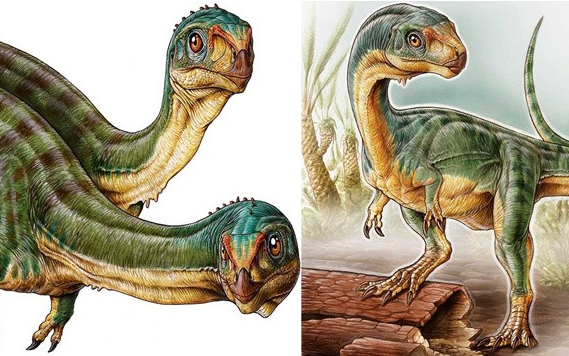
The T. rex has become a pop culture icon due to its terrifying awesomeness. Its evolutionary family includes some equally horrific relatives—but also at least one goofy cousin that probably wasn't invited to many reunions.
霸王龙形象恐怖,使人心生敬畏,因此成为流行文化的标志。它的进化家族中包含了一些同样恐怖的亲戚,但至少还有一个呆萌的表亲。恐龙家族聚会时,这个呆萌的表亲可能很少会收到邀请。
The Chilesaurus diegosuarezi is truly the platypus of dinosaurs, in that scientists responded to both with stunned disbelief. Just like its far-removed Australian counterpart, the Chilesaurus's anomalous body fooled some into thinking it was a mishmash of different animals. From its pelvis to its limbs, from its fingers to its claws, almost every body part could have, at a glance, come from a separate dinosaur.And even though it's closely related to the fearsome T. rex, the Chilesaurus was a devout vegetarian. Aesthetically, its beak-like mouth was rather less threatening than its cousin's toothy snout. It was also decidedly smaller, with a maximum length of 3 meters (10 ft) and an average size no larger than your Thanksgiving centerpiece.
Chilesaurus diegosuarezi绝对是恐龙中的"鸭嘴兽",因为这两个物种都让科学家十分错愕。和远在澳大利亚的鸭嘴兽一样,Chilesaurus不同寻常的体型使许多人误以为它是不同物种的混杂物。初一瞥,从盆骨到前脚,从手指到爪子,它身上几乎每一个部位都像是来自不同的恐龙。尽管与恐怖的霸王龙是近亲,但Chilesaurus恐龙却是虔诚的素食者。从美学观点上看,它鸟嘴般的嘴巴比起其表亲外露的尖牙显然温和得多。它的体型也明显要小很多,最长为3米(10英尺),平均大小还没有感恩节餐桌上的摆饰大。
3.The Earliest Snake Ancestor
3.蛇类最早的祖先
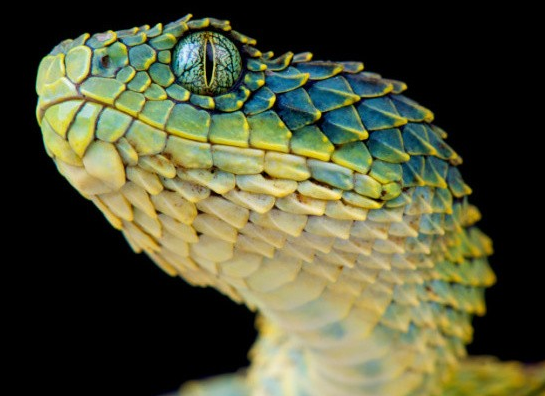
Some creatures have been dramatically altered by the gradual, unceasing effects of evolution. Others, at least superficially, have remained unchanged. The progenitor of all snake-like things, which was recently discovered to have thrived in damp southern climes almost 130 million years ago, looked not too dissimilar from its modern descendants.
在日积月累、持续不断的演化过程中,一些生物已经发生了巨大的改变。其他的一些生物则保持了原样,至少在外形上如此。近来的研究发现:所有的蛇形生物都是在1.3亿年前,潮湿的南方气候下开始大量繁殖。它们的外形与其现在的后代并无太大差异。
Well, except for its hind limbs, that is. Yes, ancient snakes had tiny, adorable legs which tapered into bonafide ankles then diverged into individual toes. The proto-snakes that followed thereafter were probably nocturnal and had needle-like teeth with which to subdue prey before gulping them down like modern snakes. It doesn't appear that these early specimens strangled their victims a la boa constrictors, so this deadly technique must have been developed further down the timeline. Surprisingly, scientists don't know much about snake evolution, and they knew considerably less before this study. To reveal the amazing legged serpent, researchers employed fossil evidence, anatomic knowledge, and a recreation of ancient snake behavior.
好吧,除了后肢。是的,古代的蛇类有小而可爱的腿,这些腿后来演变出了真实的脚踝并分叉出独立的脚趾。此后的原始蛇类很有可能是夜行性动物并且像现代的蛇类一样,有针一样的牙齿,以便在吞咽猎物之前将其制服。似乎这些早期的蛇类并不会像大蟒蛇那样捕杀猎物,这种致命的技术一定是随着时间逐渐进化而来的。令人惊讶的是,科学家对蛇类的演化知之甚少,相当多的认识还是通过这项研究得来。为了揭示这些令人惊叹的有腿蛇类,研究人员运用了化石证据、解剖知识,并且再现了古代蛇类的行为。
2.The Bat-Winged Early Bird
2.长有蝙蝠翅膀的早期鸟类
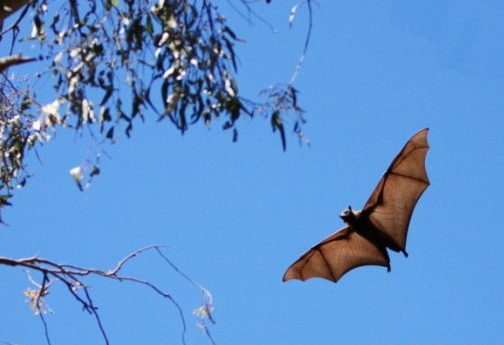
When paleontologists dusted off a mid-to-late Jurassic period creature and found it had wings, they were understandably stoked. As one of the earliest birds, the specimen, eventually named Yi qi, would offer a glimpse into the evolution of modern avians.
古生物学家在为一个侏罗纪中后期的生物样本除尘时,发现这种生物长有翅膀,这一发现令他们非常振奋。这个后来被命名为Yiqi的样本是最早的鸟类之一。它能够让我们一窥现代鸟类的进化。
But, to general surprise, the Yi qi had wings quite unlike modern avians. While reconstructing the partial skeleton unearthed in China, researchers found a patch of preserved membrane between its spindly fingers, leading them to conclude that it had creepy, bat-like wings. Or maybe even flaps like a flying squirrel. But definitely not bird wings.The Yi qi did have feathers, but apparently not where they counted most. Its clumsy wings offered none of the aerodynamic perks of feathered appendages, and it probably wasn't able to fly at all. Instead, it used its claws to climb trees before using its nasty membranous flaps to glide short distances between arboreal perches.
然而,出乎所有人的意料,Yiqi的翅膀完全不同于现代鸟类的翅膀。研究人员在对一个从中国采掘出的局部骨架进行还原再现时,发现它细长的手指间有一块薄膜。这一发现让他们推断出这种鸟类长有可怕的类似蝙蝠的翅膀,抑或是像飞鼠那样的翼膜,但绝不是鸟类用于飞行的翅膀。Yiqi确实有羽毛,但显然这些羽毛并没有价值。它这对笨拙的翅膀没法给它提供飞行的帮助,因此它可能根本就不会飞。相反,它是先用爪子爬上树,再借助翼形皮膜在栖木间滑翔一小段距离。
1.The Ancient Creature Smaller Than Its Own Sperm
1.比自身精子还小的古生物
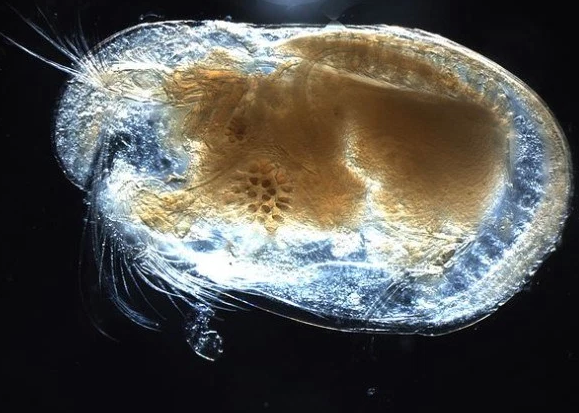
The extant ostracods are tiny crustaceans about 1 millimeter (0.04 in) in length. They're super prolific, look like plankton with whiskers, and one of their ancestors had some truly spectacular sperm.
现存的介形类动物都是大约1毫米(0.04英寸)长的甲壳纲动物,他们的繁殖能力非常强,看起来像是一些带有胡须的浮游生物。而它们的一位祖先却拥有惊人的精子。
In an extraordinarily fortunate stroke of luck, researchers found a batch of 16-million-year-old sperm, perfectly preserved inside a female ostracod's reproductive tract. Soft tissues like sperm are ridiculously fragile. So to stumble upon a specimen of such detail and age is almost unheard of. To find that the specimens involved were immortalized post-coitus considerably boosts their rarity.And the preserved sperm were bizarrely, comically large, up to 1 centimeter (0.4 in) in length, which makes them considerably longer than the ostracod itself. It's pretty rare in nature for an animal to boast sperm larger than itself, although some moths and fruit flies also share in this distinction. Sadly, scientists aren't sure why these unassuming animals pack .50-cal ammo for gametes, but they are duly impressed.
在一次非常偶然的机会下,研究人员幸运地发现了一些被完整保存在母体生殖系统中的精子,距今已有1600万年。精子这样的软组织极易被破坏,所以,能够发现保存如此完整且年代如此久远的样本,这几乎闻所未闻。尤其还是这种在性交后就被永久存留在母体里的样本,更让这次发现显得弥足珍贵。此外,这些被保存下来的精子体积较大,长度也有1厘米(0.4英寸)左右,而且奇形怪状,让人感到很滑稽。这也说明这种甲壳纲动物的精子比它自身更长。尽管一些飞蛾和果蝇的精子也大于它们的自身体积,但在自然界里,这一现象仍然非常罕见。遗憾的是,科学家们仍不能解释为什么这种生性低调的物种要在卵细胞内塞满0.5口径的"子弹",但这一发现还是给人们留下了深刻的印象。
审校:赵倩 编辑:旭旭 来源:前十网


